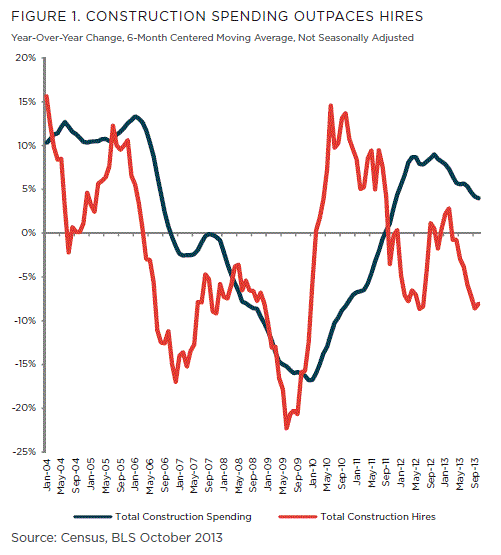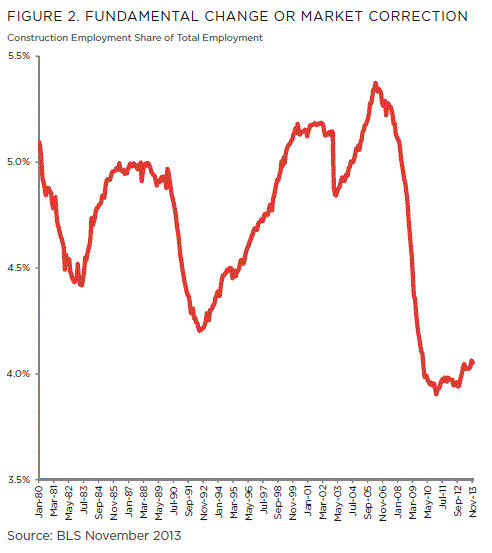Blog

CoreLogic asks if Poor Construction Hiring is New Normal
Data presented by CoreLogic in its newrnedition of MarketPulse raises anrninteresting question about employment in the construction sector. Is the slow pace of hiring the result of arnfundamental change in the construction industry or is the industry self-correcting</bto a more sustainable level of employment?</p
Thomas Vitlo, author of “Hesitation inrnthe Construction Industry,” says that, while overall construction spending hasrnincreased since the end of the recession, construction employment has not kept pace. He based his analysis on the Census Bureau’s “Valuernof Construction Put in Place Survey” and the Bureau of Labor Statistics “JobrnOpenings and Labor Turnover Survey. Vitlornused a six-month moving average to iron out the strong seasonality of activityrnin the construction industry. </p
In the resulting chart it is clear that,rnbefore the Great Recession, the two series were fairly well correlated. Construction hiring fell as spending declinedrnand rose as spending increased. Then inrnearly 2010 the two diverged. Spendingrnfell to a low of 16.8 percent in December 2009 and increased to a peak of 9 percentrnyear-over-year in October 2012. Totalrnconstruction hires, however peaked at 14.6 percent in June 2010 and have beenrndecreasing by 8 percent year-over-year as of October 2013. “Therefore,” Vitlo says, “as spending hasrngenerally increased over the past few years, construction hires have declined,rnaveraging only a 1 percent increase since June 2010.”</p
 </p
</p
Coinciding with the shift in thernrelationship between hiring and spending is a reversal in constructionrnemployment. The BLS employment figuresrnshow that in the eight years before the recession construction employmentrnaveraged 7.1 million but since September 2008 the average has been 5.8rnmillion. Even more intriguing, Vitlornsays, is the share of employment going to construction. Pre-recession construction employmentrnaveraged 5.1 percent share and it is now 4.1 percent. After the peak-to-trough decline the sharernhas plateaued for 50 months.</p

All Content Copyright © 2003 – 2009 Brown House Media, Inc. All Rights Reserved.nReproduction in any form without permission of MortgageNewsDaily.com is prohibited.
Latest Articles
By John Gittelsohn August 24, 2020, 4:00 AM PDT Some of the largest real estate investors are walking away from Read More...
Late-Stage Delinquencies are SurgingAug 21 2020, 11:59AM Like the report from Black Knight earlier today, the second quarter National Delinquency Survey from the Read More...
Published by the Federal Reserve Bank of San FranciscoIt was recently published by the Federal Reserve Bank of San Francisco, which is about as official as you can Read More...

Comments
Leave a Comment